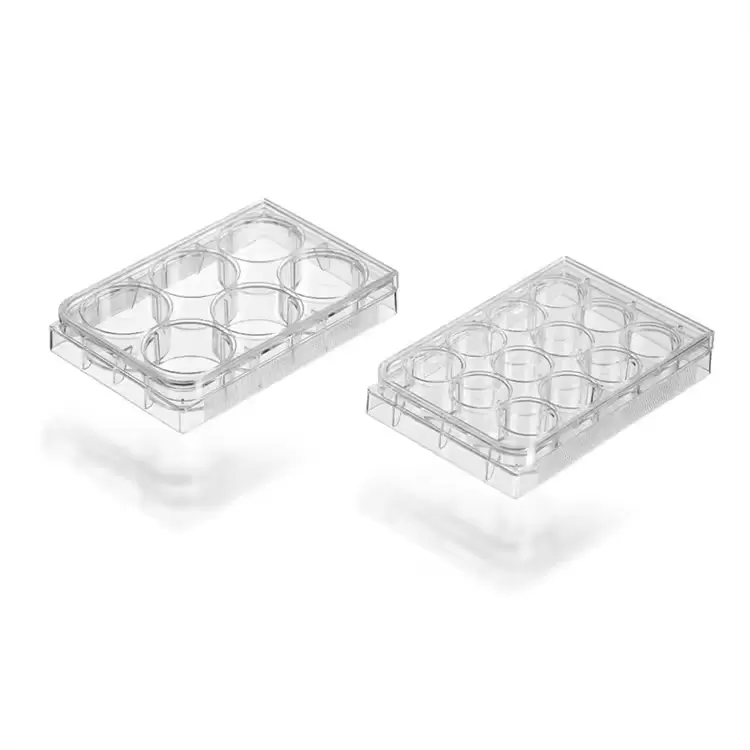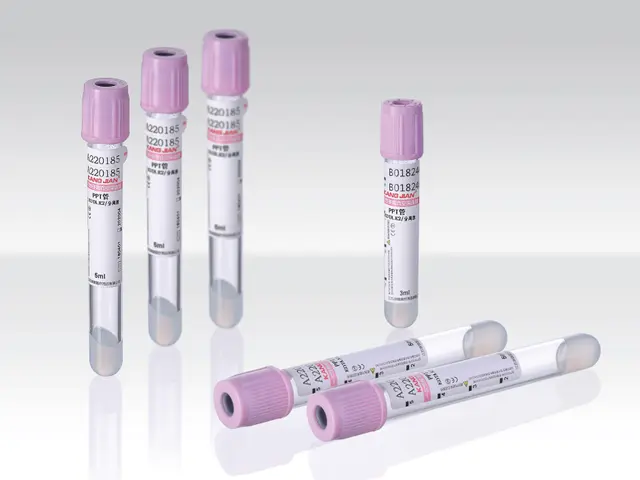Efficient and Safe Blood Collection with the Pen Type Blood Collection Needle
In medical and healthcare settings, blood collection is a routine but critical procedure used for diagnosing and monitoring various health conditions. While the effectiveness of blood collection depends on the skill of the healthcare professional, the tools used during the procedure also play an essential role in ensuring a smooth, safe, and comfortable experience for the patient. One such tool that has gained significant popularity for its precision and ease of use is the pen type blood collection needle.
The pen type blood collection needle is a modern and efficient device used primarily for venipuncture, offering a range of benefits over traditional blood collection methods. Designed for both convenience and safety, this needle has transformed how blood samples are collected, particularly in outpatient clinics, hospitals, and diagnostic labs. In this comprehensive guide, we will explore everything you need to know about pen type blood collection needles, including their design, advantages, and key considerations for use in medical practice.
What is a Pen Type Blood Collection Needle?
A pen type blood collection needle is a specialized device used for drawing blood from patients in a precise and controlled manner. It is designed to resemble the shape and size of a pen, making it easy for healthcare professionals to hold and operate during blood collection procedures. The design is ergonomically focused, allowing for better control and less discomfort for both the patient and the healthcare provider.
Unlike traditional blood collection methods, which often involve larger and bulkier needles, the pen type blood collection needle features a fine, sharp needle that reduces the overall trauma to the vein and surrounding tissues. Its user-friendly design typically includes a retractable needle and a built-in safety mechanism to prevent needle-stick injuries after the procedure.
How Does a Pen Type Blood Collection Needle Work?
The pen type blood collection needle is designed to facilitate easy blood collection with minimal discomfort for the patient. The following is a step-by-step breakdown of how this needle works:
Needle Insertion: The needle is carefully inserted into the patient’s vein, usually on the forearm, after the skin has been cleaned and prepped. The pen-like design allows the healthcare provider to hold the device in a steady and controlled manner, improving accuracy and precision.
Blood Collection: Once the needle is positioned correctly in the vein, blood is drawn into a collection tube or syringe. The pen type needle ensures that the blood flow is directed into the proper container without excessive friction or pressure, minimizing patient discomfort.
Needle Retraction and Safety: After the blood sample has been successfully collected, the needle is automatically retracted back into the pen-type casing. This retraction mechanism helps prevent accidental needle sticks, which is a major safety advantage over conventional needles.
Sealing and Disposal: The pen-type design makes the entire process hygienic and safe, allowing for easy disposal of the used needle in a proper sharps container without the need for manual handling.
Key Features of a Pen Type Blood Collection Needle
Ergonomic Design for Better Control
The pen type blood collection needle is designed for comfort and control. Its shape and size make it easy to handle, even during extended procedures, reducing hand strain for healthcare professionals. This ergonomic design also improves accuracy during needle insertion, making the process smoother for both the patient and the medical provider.
Precision and Safety Features
One of the key features of the pen type blood collection needle is its precision. The fine, sharp needle ensures minimal discomfort during the blood draw while reducing the likelihood of damage to the vein or surrounding tissue. In addition, the retractable mechanism ensures that the needle is automatically retracted after use, preventing accidental needle sticks, which are a major concern in healthcare settings.
Enhanced Comfort for the Patient
The pen type blood collection needle is designed to cause less pain and trauma compared to traditional, larger needles. The reduced gauge size of the needle, along with its precise insertion, minimizes the sensation of discomfort during the procedure. This is particularly important for patients who are anxious about blood collection or for children and elderly individuals who may be more sensitive to pain.
Convenient and Efficient Blood Collection
The pen-like design allows healthcare professionals to use the pen type blood collection needle quickly and efficiently, making it an ideal choice for high-volume blood draws in clinics and hospitals. The needle’s sharpness and precision mean that blood can be collected with minimal effort and fewer attempts, leading to faster procedures and reduced patient discomfort.
Hygienic and Easy Disposal
The pen type blood collection needle typically features a safety cap and retractable needle, ensuring that the used needle is securely contained within the pen casing. This design reduces the risk of contamination and makes disposal easier, which is crucial for maintaining hygiene and preventing the spread of infections.
Advantages of Using a Pen Type Blood Collection Needle
Reduced Risk of Needle Stick Injuries
One of the most significant advantages of the pen type blood collection needle is its built-in safety mechanism. After the blood draw is completed, the needle retracts automatically into the device, preventing accidental needle-stick injuries. This safety feature helps reduce the risk of bloodborne infections for healthcare professionals and patients.
Minimized Pain and Discomfort
The pen type blood collection needle is designed to be minimally invasive. The smaller, sharper needle reduces the discomfort associated with blood collection, making the procedure more tolerable for patients. This is especially beneficial for individuals who are needle-phobic, as well as for pediatric or geriatric patients.
Increased Efficiency and Speed
Healthcare professionals can perform blood draws more quickly and efficiently with the pen type blood collection needle, allowing them to manage patient volume in busy healthcare settings. Its ergonomic design ensures that medical personnel can maintain proper control over the procedure, reducing the risk of errors and improving overall patient satisfaction.
Hygienic and Safe Handling
With its retractable needle and safe disposal system, the pen type blood collection needle helps maintain a high level of hygiene in medical environments. The device’s design minimizes the need for direct contact with the needle, reducing the chance of contamination and ensuring that healthcare workers can handle the device without compromising safety.
Ideal for Pediatric and Geriatric Patients
The pen type blood collection needle is particularly beneficial for pediatric and geriatric patients, who may have smaller veins or be more sensitive to pain. The needle's precision and smaller gauge size make it easier to access veins and cause less trauma during the procedure. This makes it an excellent choice for doctors and nurses who frequently work with vulnerable patient groups.
Applications of the Pen Type Blood Collection Needle
Routine Blood Draws in Clinics and Hospitals
The pen type blood collection needle is commonly used in outpatient clinics, emergency rooms, and hospitals for routine blood draws. Its efficiency and precision make it ideal for high-throughput settings where time and accuracy are essential.
Pediatric Blood Collection
Pediatric patients often experience anxiety during blood collection, and the pen type blood collection needle can help alleviate some of this discomfort. Its small size and precision make it suitable for use on children, where minimizing pain and anxiety is a top priority.
Home Healthcare
With the growing demand for home healthcare services, the pen type blood collection needle has also found applications in at-home blood collection. This portable and easy-to-use device allows healthcare professionals to collect blood samples in a safe and efficient manner in a patient’s home, improving convenience for both the patient and the healthcare provider.
Blood Donation Centers
Blood donation centers often rely on the pen type blood collection needle for its comfort and efficiency. Donors typically donate larger volumes of blood, and a quick, painless experience encourages repeat donations. The safety features of the pen type blood collection needle also ensure that the procedure is conducted safely and hygienically.
How to Use a Pen Type Blood Collection Needle Effectively
To get the best results from a pen type blood collection needle, healthcare professionals should follow these steps:
Prepare the Patient: Ensure that the patient is comfortably positioned, and clean the puncture site with an antiseptic wipe.
Insert the Needle: Hold the pen type blood collection needle with a firm grip and insert the needle into the vein at a shallow angle.
Collect the Blood Sample: Once the needle is properly positioned, collect the blood sample as required, making sure the needle remains stable throughout the process.
Retract the Needle: After the sample is collected, allow the needle to automatically retract into the device. Ensure that the needle is securely contained and ready for disposal.
Dispose of the Needle: Safely dispose of the used pen type blood collection needle in a designated sharps container.
Conclusion: Why the Pen Type Blood Collection Needle is the Future of Safe and Efficient Blood Sampling
The pen type blood collection needle is revolutionizing how blood draws are performed, offering a combination of precision, safety, and patient comfort. With its ergonomic design, retractable needle, and minimal discomfort, it provides an ideal solution for healthcare professionals who prioritize efficiency, hygiene, and safety in blood collection.
Whether used in hospitals, clinics, or home healthcare settings, the pen type blood collection needle ensures that blood collection is a smoother and safer experience for both patients and healthcare providers. Its ease of use, reliable performance, and built-in safety features make it a valuable tool for modern medical practices.
By choosing the pen type blood collection needle, you ensure that your practice is equipped with a tool that improves patient satisfaction, reduces the risk of injury, and enhances overall efficiency in blood collection procedures.




